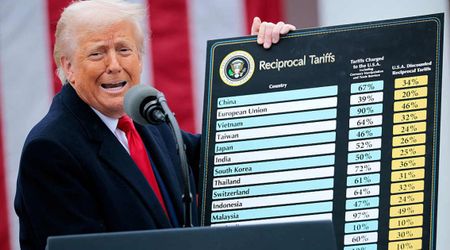How The ‘Mob Wives’ Trend Is Fueling a Resurgence of Fur

The viral "mob wives" trend on TikTok has breathed new life into fur fashion, challenging the narrative of its decline in recent years. For Edwards-Lowell Furs, a California-based fur retailer facing the challenges of a ban on new fur sales and declining revenues, the partnership with vintage e-tailer The Sil proved to be a game-changer. The online auction of pre-owned coats on Instagram resulted in a surge in sales, with the first batch being sold within minutes.

The "mob wife" aesthetic, characterized by animal prints, heavy gold jewelry, glossy leather trousers, and massive fur coats, has played a significant role in this unexpected fur renaissance. With over 160 million views on the platform, the trend has become a cultural phenomenon, further fueled by the 25th anniversary of HBO's mafia-centric hit "The Sopranos."
This resurgence in fur fashion marks a stark contrast to the industry's choices of the late 2010s when major luxury brands announced their intentions to phase out fur products. However, the current fur moment is different – it's about secondhand and vintage pieces. Fast fashion retailers, such as Zara, are capitalizing on the trend by offering affordable faux fur options that resonate with consumers eager to embrace the "mob wife" aesthetic.

While the controversial TikTok trend may have a relatively short lifespan, its impact on the fashion industry has been substantial. Brands that are agile and quick to respond to these viral moments stand to benefit, with fast fashion and mass-market retailers reaping the rewards. TikTok users are actively encouraging thrifting, driving sales for vintage fur sellers like The Sil and The RealReal. Moreover, the popularity of pre-owned fur garments has skyrocketed, signaling a shift in consumer attitudes toward sustainable fashion.

However, as fur clothing makes a comeback, animal rights advocates express concerns about the potential consequences. Even with sustainable alternatives like plant-based fur from brands like BioFluff and Spiber, there is apprehension that the increased visibility might stimulate demand for real fur merchandise.
PJ Smith of the Humane Society of the United States remains hopeful that recent legislative efforts will be effective in curbing demand and ultimately leading to the decline of this industry. "We can already see the end of the tunnel, the fur industry is dying thanks to policies like fur bans," said Smith.

In the coming months, the future of fur fashion seems to hinge on a delicate balance between vintage allure, sustainable alternatives, and evolving consumer values. The industry's survival will likely depend on its ability to adapt to changing trends, incorporate ethical practices, and embrace innovation in materials without compromising on style or ethics.
























